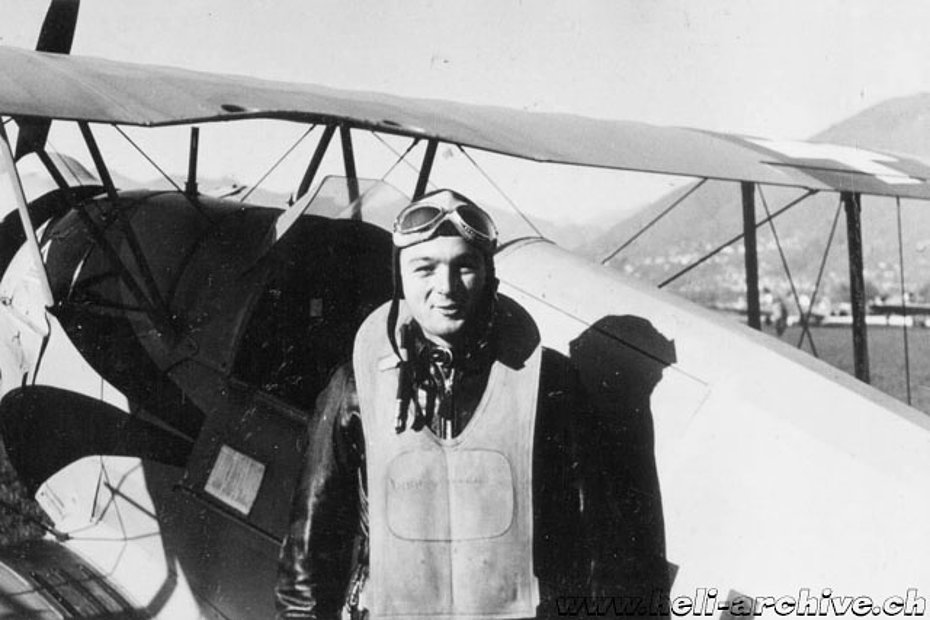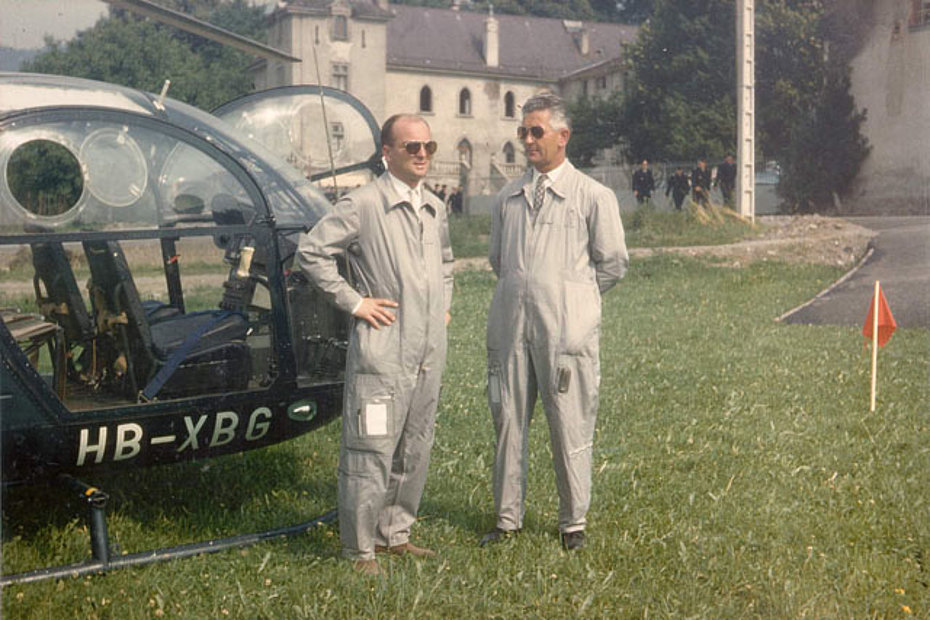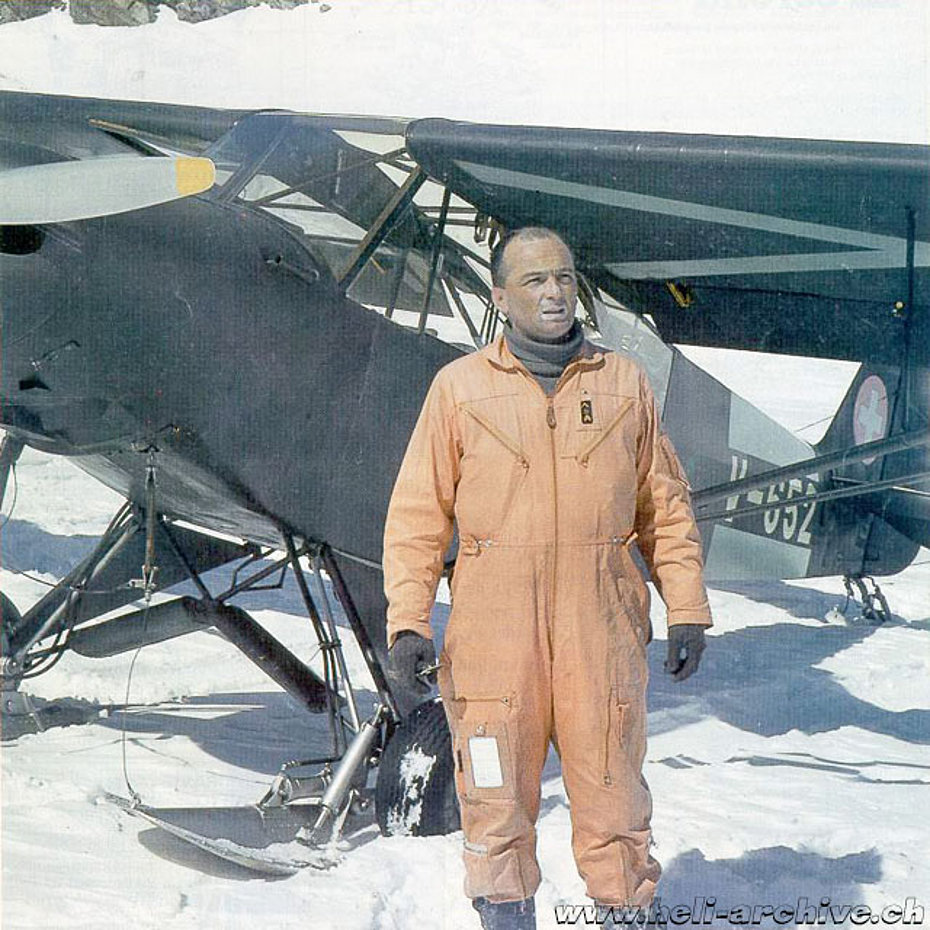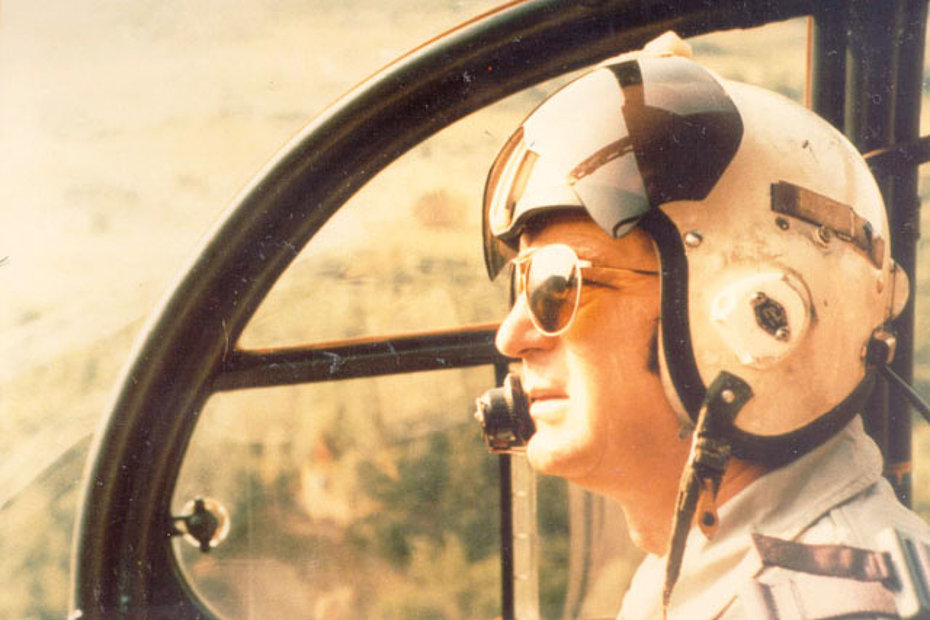
Formentini Vivando
Although this website is mainly dedicated to civilian helicopter pilots I want to make an exception for Vivando Formentini: he was in fact the first ticinese helicopter pilot.
Vivando was born in Bellinzona on February 24, 1930 and from an early age he showed a great enthusiasm for aviation. As a little boy he devoted himself to building model airplanes.
After the compulsory school he enrolled in the School of Arts and Crafts in Bellinzona.
On December 9, 1948, little more than eighteen years old, having been trained by the famous pilot from Ticino Olinto Carmine, he obtained the aeroplanes private pilot license.
In 1950 he fulfilled the compulsory recruits school in the Swiss army and in 1951 the non-commissioned officers school in Payerne. Successively he was admitted to the military pilot school at the Locarno’s military air base.
After his basic training on the Bücker Jungmeister, Jungmann and Harvard AT-16 he began to fly with the Morane D-3801 and much later with the first jets in service with the Swiss Air Force: Vampire, Venom and Hunter. As a professional military pilot he entered in the the Surveillance Squadron 1 becoming pilot-instructor.

Helicopter pilot
Trained by captain Fritz Kolb, Vivando Formentini began the transition course on helicopters in Dübendorf on July 7, 1959. He did the first training flights on the SO 1221S Djinn and then successively, few days later, on the Hiller UH-12B, the first helicopter purchased by the Swiss Air Force in 1952. Among his instructors there were the very first military helicopter pilots such as Godi Amsler and Colonel Willy Frei, the first Swiss jet pilot nicknamed “Jet-Willy” or in German “Düsen-Willy”.
Shortly after the ticinese pilot did the transition on the SE 3130 Alouette II in Marignane/France. "You wanna know the truth?" he said during our interview: "The French pilots have really taught me how to fly helicopters. They were really good, they had thousands of flying hours under their belts, and a long experience in all kinds of air operation: flights over the sea, in the mountains, air navigation, night flying, tactical flight, etc.. They had really all the credentials to teach, a basic requirement for an instructor".

In the 1960s Vivando Formentini followed other training courses to improve the flying technique. Among other he followed a landing course in the mountains with aircraft equipped with skis. His instructor was Hermann Geiger, the most famous Swiss alpine pilot.
Between 1962 and 1964 Formantini was commissioned to study the possible practical uses of the helicopter and then to prepare a documentation. For these reasons he often went abroad to collect experiences of other pilots and to follow special training courses, especially in Germany, France, Luxembourg and Italy.
At the end of 1963 he was promoted sergeant instructor and consequently he left the Surveillance Squadron. From that moment on he devoted himself to the training of military helicopters pilots and developed the first specific documentation to adequately prepare the future pilots.
The first group of pilots trained by Vivando Formentini completed the training course on Alouette II in Payerne in 1964.

From January 1, 1974 Vivando Formentini returned in Ticino and began his activity in Lodrino as head of the helicopter pilots school. In addition to the training courses he was frequenlty charged to perform transport missions, supply, observation and rescue flights, as well as firefighting operations mainly using the SE 3160 Alouette III.
On October 18, 1988 he flew for the last time before his retirement. At that time he had accumulated a total of 7'205 hours of flight time and 33'623 landings.
After his retirement he devoted himself to various activities, also holding the position of vice-mayor in Tegna the small village where he lived since his return in Ticino.
Vivando Formentini, who was a modest and reserved person, passed away on November 28, 2008 at the age of 78.
HAB 04/2013

